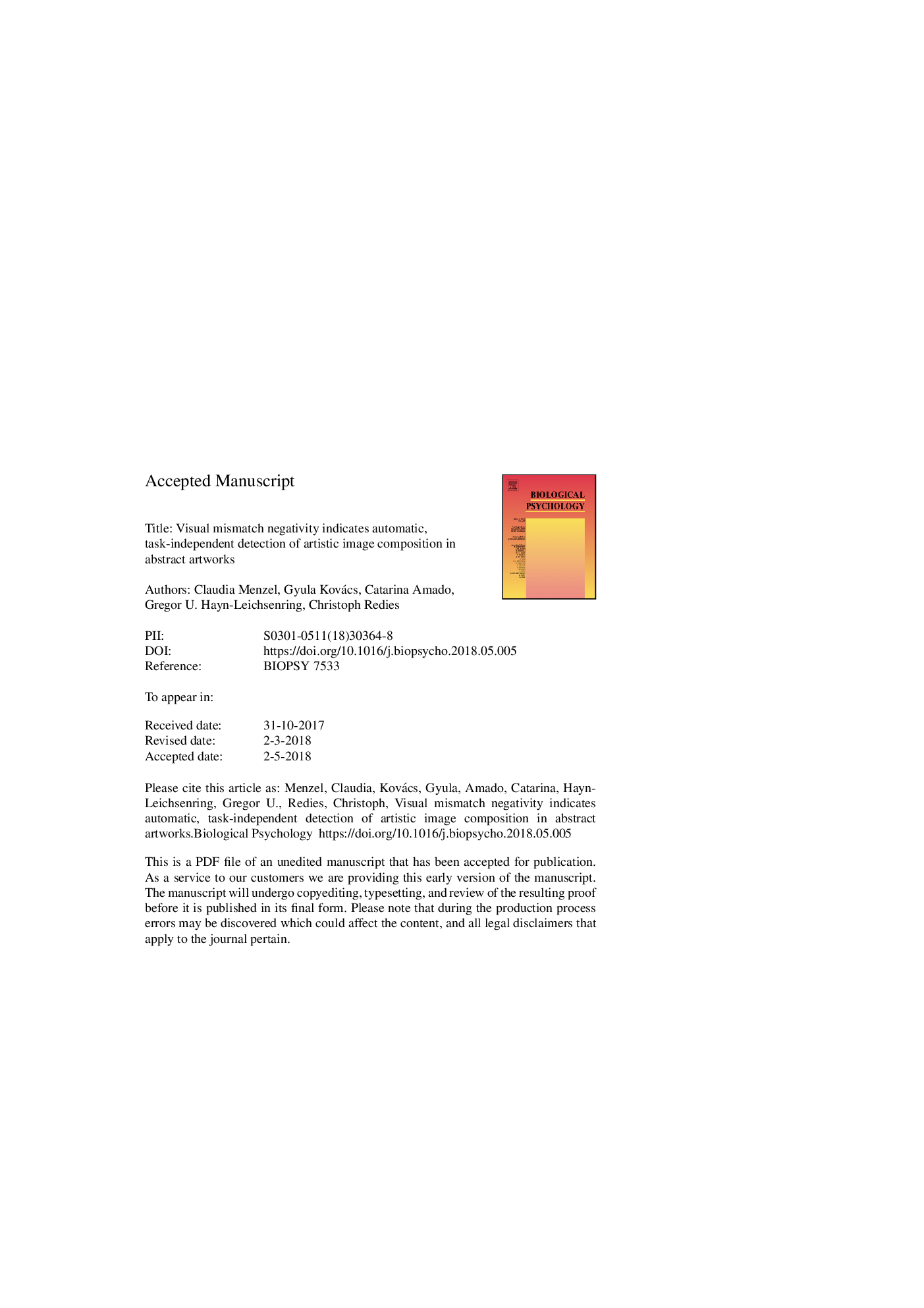| Article ID | Journal | Published Year | Pages | File Type |
|---|---|---|---|---|
| 7278082 | Biological Psychology | 2018 | 32 Pages |
Abstract
In complex abstract art, image composition (i.e., the artist's deliberate arrangement of pictorial elements) is an important aesthetic feature. We investigated whether the human brain detects image composition in abstract artworks automatically (i.e., independently of the experimental task). To this aim, we studied whether a group of 20 original artworks elicited a visual mismatch negativity when contrasted with a group of 20 images that were composed of the same pictorial elements as the originals, but in shuffled arrangements, which destroy artistic composition. We used a passive oddball paradigm with parallel electroencephalogram recordings to investigate the detection of image type-specific properties. We observed significant deviant-standard differences for the shuffled and original images, respectively. Furthermore, for both types of images, differences in amplitudes correlated with the behavioral ratings of the images. In conclusion, we show that the human brain can detect composition-related image properties in visual artworks in an automatic fashion.
Related Topics
Life Sciences
Neuroscience
Behavioral Neuroscience
Authors
Claudia Menzel, Gyula Kovács, Catarina Amado, Gregor U. Hayn-Leichsenring, Christoph Redies,
